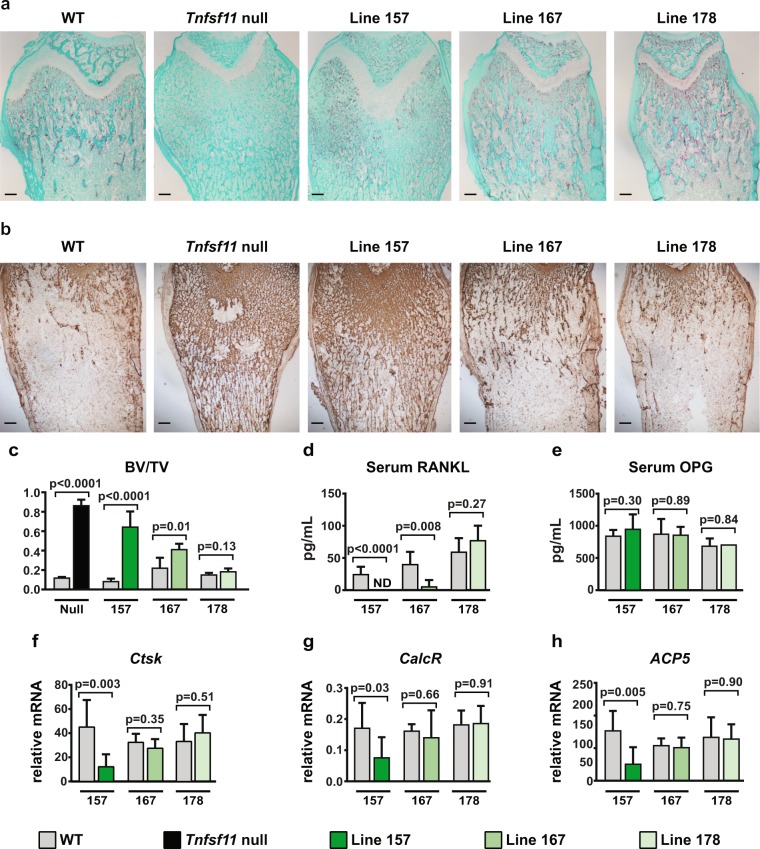Figure 3.
Bone phenotype of selected transgenic mouse lines. (a) Paraffin sections of the distal femurs of wild type (WT), Tnfsf11 null, and the indicated transgenic mice stained for TRAPase activity. Osteoclasts are stained red. (b) Immunohistochemistry of paraffin sections of the distal femurs beneath the growth plate of WT, Tnfsf11-null, and the indicated transgenic lines for Type II collagen visualization. (c) Cancellous bone volume of right femurs from 5-week-old mice from line 157 WT (n = 6) and transgenic (TG) (n = 6), line 167 WT (n = 4) and TG (n = 5), and line 178 WT (n = 6) and TG (n = 3) mice. Both sexes were included. Transgenic compared to WT littermates of the same line using Student’s t test. (d) RANKL protein levels in serum of 5-week-old line 157 WT (n = 7) and TG (n = 7), line 167 WT (n = 4) and TG (n = 5), and line 178 WT (n = 6) and TG (n = 3) mice. Both sexes were included. ND, not detected. Transgenic compared to WT littermates of the same line using Student’s t test. (e) Osteoprotegerin (OPG) protein levels in serum of 5-week-old line 157 WT (n = 6) and TG (n = 7) mice, line 167 WT (n = 4) and TG (n = 5), and line 178 WT (n = 6) and TG (n = 2). Both sexes were included. Transgenic compared to WT littermates of the same line using Student’s t test. (f–h) Quantitative RT-qPCR analysis of Cathepsin K, CalcR, and ACP5 (TRAP) mRNAs in L5 vertebrae from 5-week-old mice of line 157 WT (n = 6) and TG (n = 8), line 167 WT (n = 4) and TG (n = 5), and line 178 WT (n = 6) and TG (n = 3). Both sexes were included. Transgenic compared to WT littermates of the same line using Student’s t test.

